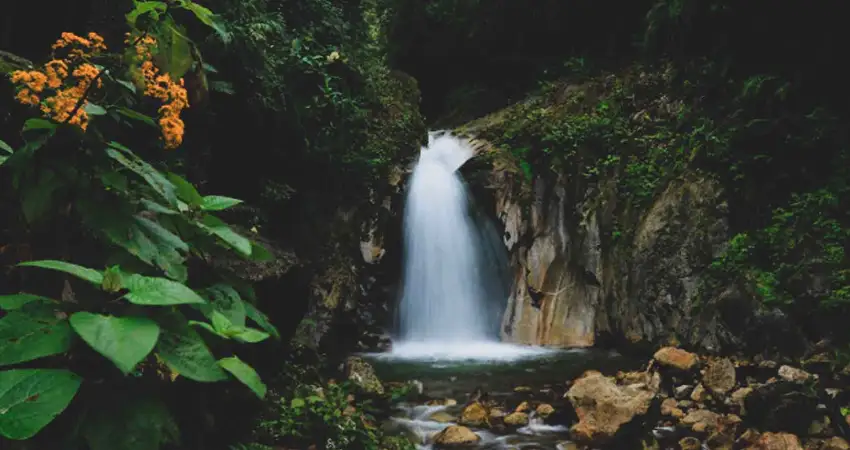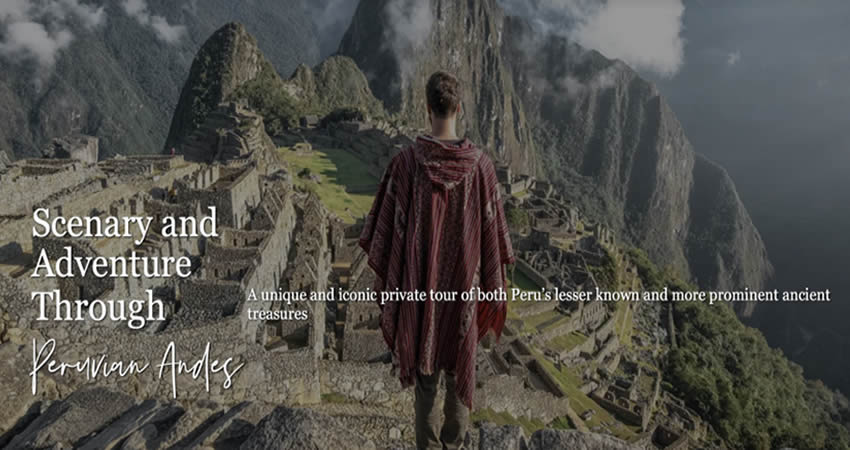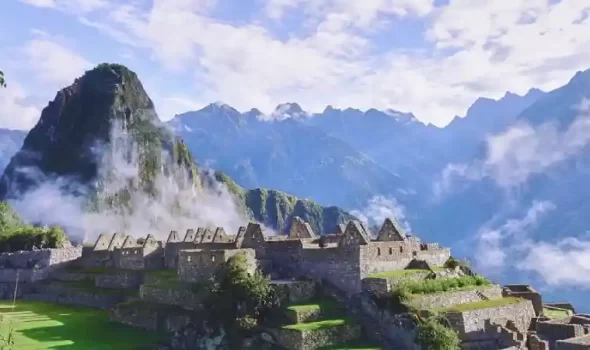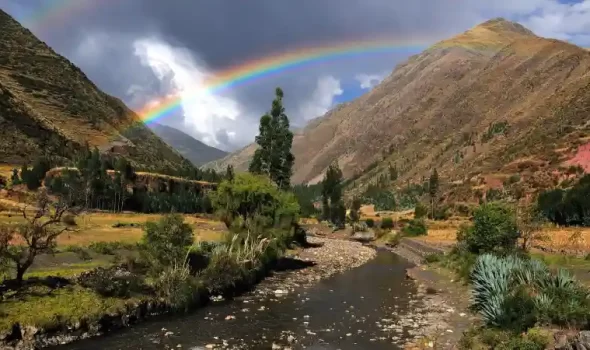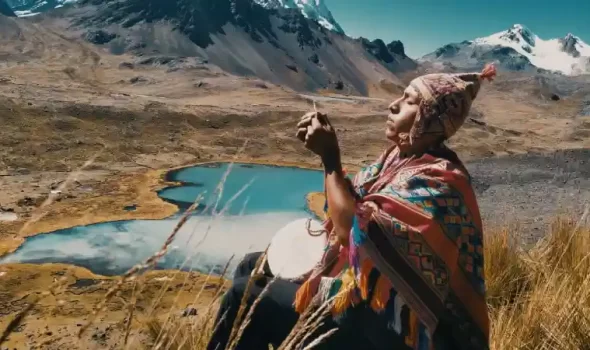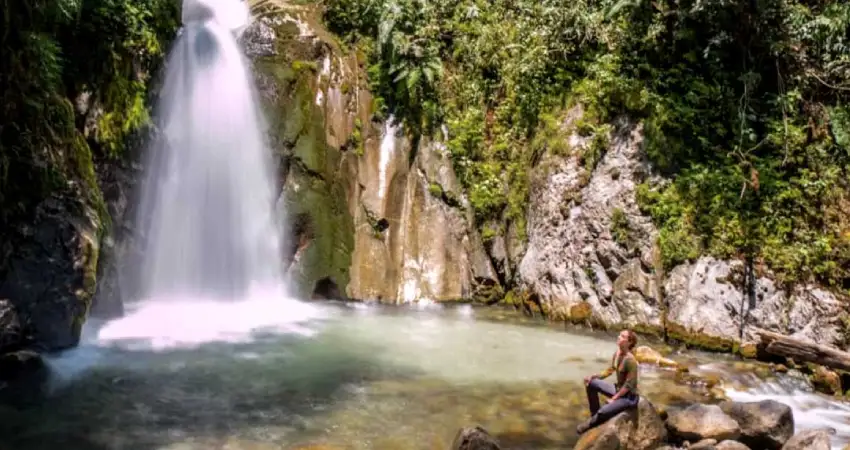
1.- INTRODUCTION TO MANDOR WATERFALLS
A 30 minute walk from the town of Aguas Calientes is the Mandor Waterfalls, a natural jewel that thanks to its attractiveness and beauty has attracted the attention of many people who seek to know it during their stay before or after visiting the world wonder of Machu Picchu. Its environment stands out for the wide presence of vegetation in addition to biodiversity in which you can witness a large collection of orchids, exotic birds and varied flora. It is also important to highlight that the Mandor Waterfalls have the peculiar characteristic of containing crystalline waters that descend among rocks and dense vegetation, which allows filtering of all impurities.
Something that is also important to mention about the Mandor garden & waterfall is that it has an extremely important role in the ecological balance inside the urban river. Every ecosystem that exists thanks to the Mandor Waterfalls functions as a conservation space for both plant and animal species, as well as being an important source of food for the entire region. The waters of the Mandor Waterfalls are the source of water for the nearby rivers and are an important factor in agricultural production and wildlife, It is also here that the presence of the Mandor Waterfalls is a symbol that comments on the ecotourism activity thus allowing all travelers who seek to visit the Mandor garden & waterfall to have a sustainable conscience helping in this way to preserve nature.
2.- HOW TO GET TO MANDOR WATERFALLS
To get to the Mandor Waterfalls the first thing you must do is to get to the town of Aguas Calientes, you can leave from that Cusco in private transport that will take you to Ollantaytambo, from here you take a tourist train that can be part of the company Peru Rail or Inca Rail to travel through part of the valley, the trip takes about an hour and 40 minutes to the town of Aguas Calientes. If the trip is done in the morning, it gives you enough time to continue directly to the Mandor Waterfalls, of course you must first leave the heavy equipment at the designated hotel. Starting from the town of Aguas Calientes you follow a trail through the train lines, this hike is quite simple and is not very physically demanding but it is extensive, you walk approximately 2 km and a half, first to the entrance gate and then into the forested territory, on the other hand if you arrived in the afternoon or evening it is best to wait until the next day so that during the day you can properly enjoy the Mandor Waterfalls.
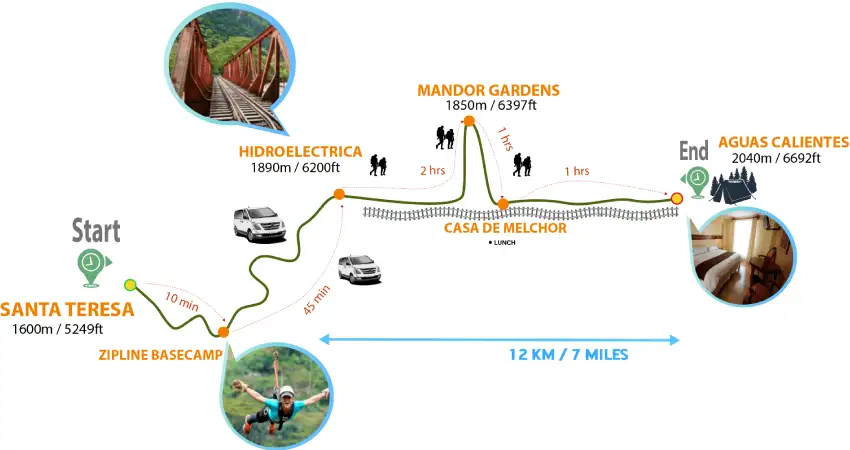
3.- THINGS TO SEE DURING YOUR VISIT TO THE MANDOR GARDEN & WATERFALL
3.1.- Botanical Garden
Inside the territory of the Mandor garden & waterfall stands out first the beauty that has the wide botanical garden that resolved by the great variety of plants and trees that are not only aesthetically beautiful but many have functions of healing plants that have been used for generations, for those passionate about nature and at the same time of botany is the place becomes a complete paradise highlighting of itself the great variety of orchids that exist as they have been recorded over 400 species in the vicinity near the Inca city of Machu Picchu.
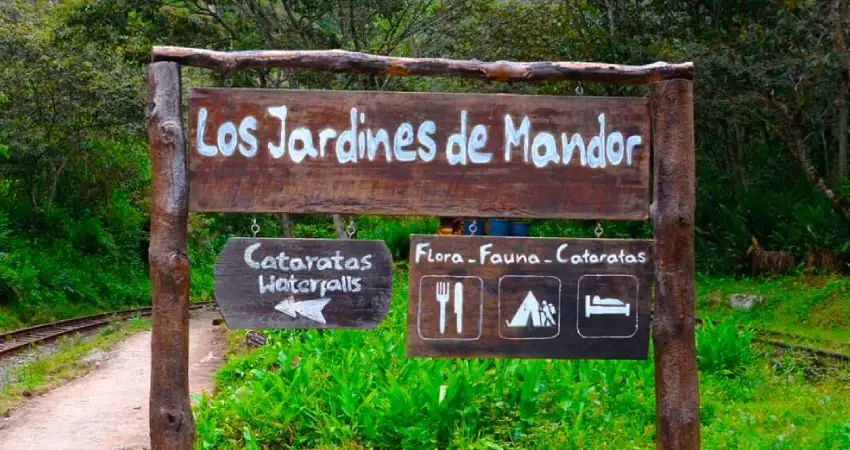
3.2.- Mandor waterfalls
Undoubtedly the Mandor Waterfalls main attraction area that exists within the entire territory of the Mandor garden & waterfall, is mainly characterized by being a waterfall that have about 30 m high and despite being close to the jungle area its waters are quite cold but that does not prevent many travelers looking to feel the adrenaline venture to bathe in these waters, Since a few years ago it has been catalogued as one of the most beautiful natural landscapes that the town of Aguas Calientes has to offer. Besides, thanks to the fact that it is not known by everyone, the frequency of visitors is low, which allows the natural beauty of the Mandor waterfalls to remain almost intact.
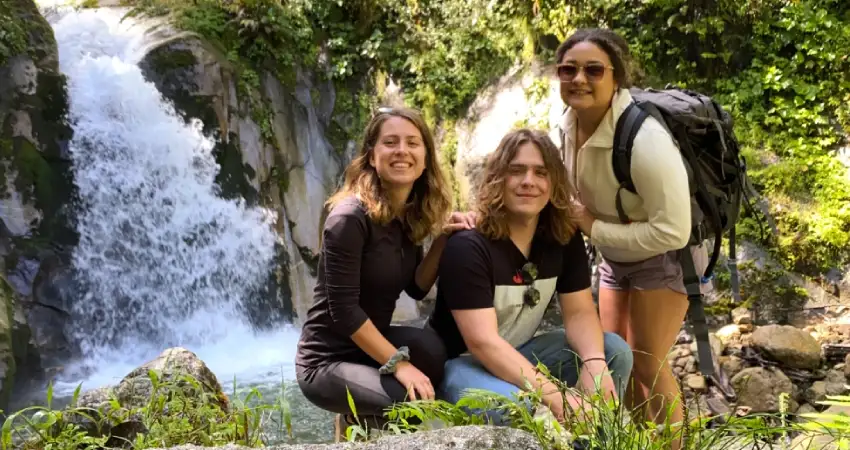
AN ALTERNATIVE WAY
“Another way that allows you to reach the Mandor Waterfalls is to first get to the hydroelectric station from Cusco, the trip takes about six hours. From this point you start the hike along the same railway towards the town of Aguas Calientes but before arriving you can make a small detour to visit the Mandor Waterfalls.”
3.3.- Flora and Fauna
Inside the territory of the Mandor Waterfalls you can find a great variety of natural life, highlighting primarily to the large number of species of flowers such as orchids that are the main guests here as they have been recorded more than 400 types of species and being essentially beautiful for having the characteristic of having bilateral symmetry and that each species has different colors, among the most important are the Wiñayhuayna, Waqanki and others. Of course there is also a wide presence of trees in the environment near the Mandor Waterfalls, essentially the Cedar is considered a native tree of the Andes. It is characterized for being leafy and having a strong trunk that many times is used as a resource to produce wood, thanks to its branches that extend allowing the sun can not filter easily during the hike for this reason is one of the essential supports during this activity.
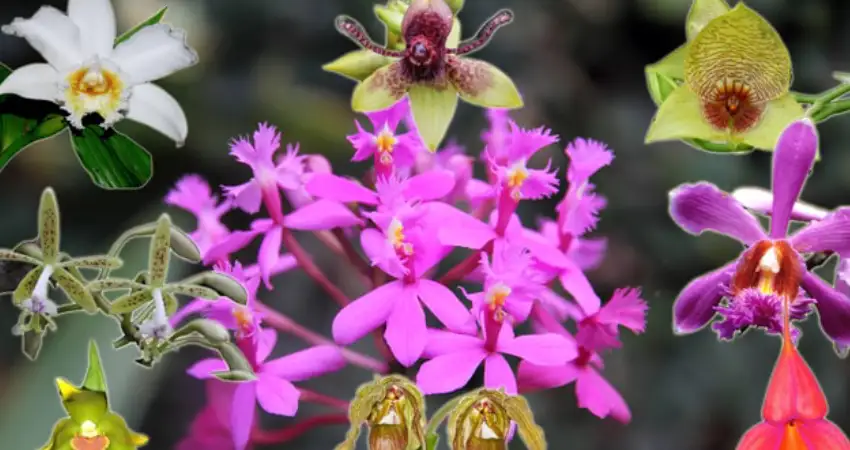
On the other hand it is also possible to enjoy seeing wild animals during the experience of visiting the Mandor Waterfalls, thanks to the large presence of plants and flowers is that you can see a lot of butterflies that are very beautiful and peculiar thanks to the colors they have in the rooms, like orchids it is estimated that throughout the territory of Machu Picchu can be found more than 500 species of butterflies having some as native, then there are other animals that are popular for enjoying this ecosystem to make it their natural habitat among them are found in the Sachacabra which is a kind of smaller deer because it measures only 70 cm. Obviously we can not omit the presence of the national bird of Peru, the cock of the rock also enjoys the ecosystem that has been created near the Mandor Waterfalls to have it as habitat, this time easily identifiable thanks to the peculiar colors of orange plumage that it presents. Finally among the main animals that stand out from all these areas are the hummingbirds and of course the famous spectacled bear that has been considered as a symbol of preservation and sustainability in this sector.
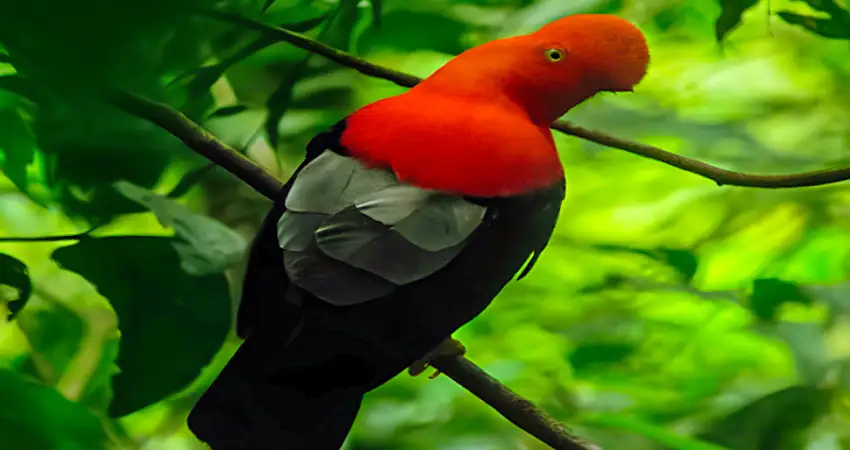
4.- USEFUL PASSENGER INFORMATION ABOUT MANDOR WATERFALLS
4.1.- Entrance fees
| Foreign | s/10.00 peruvian soles ($3.50 dollars) |
| National | s/5.00 peruvian soles ($2.00 dollars) |
4.2.- Operating hours
| Monday to Sunday | From 06:30 am until to 16:30 pm |
| There is the option of camping, for this you only have to add S/10.00 per person and bring your own tent. | |
4.3.- Preparing your luggage
- Light Clothing: Remember that the Mandor Waterfalls are located near the jungle area, so the temperature and the environment are quite warm. It is best to always wear light clothing that you can easily put in your luggage. It includes loose pants, a long-sleeved polo shirt, and a short-sleeved one that you can change into.
- Shoes: Although the hiking experience is light, it is always recommended that you bring the necessary footwear, trekking shoes are ideal for this experience.
- Protection: The sun is often one of the factors that we must take into account, for this reason it is ideal that you bring protection against it such as hats, sunglasses, or sunscreen.
- Repellent: Being quite close to the jungle, the presence of mosquitoes is inevitable. Bring a suitable repellent for your skin.
- Change of clothes: If you plan to enjoy the delicious waters that fall from the Mandor Waterfalls, then you should bring a second change of clothes with which you can change.
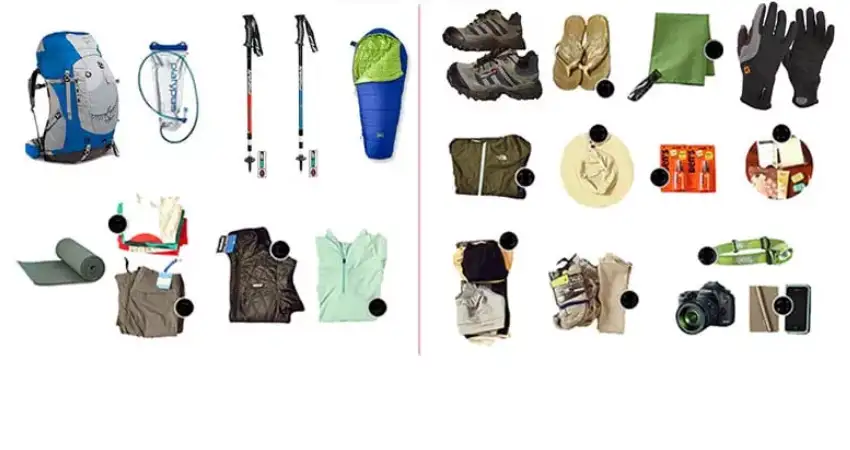
| “The only true voyage of discovery consists not in seeking new landscapes, but in looking with new eyes.” |
5.- THE BEST SEASON TO VISIT THE MANDOR WATERFALLS
Undoubtedly the best time of the year to properly enjoy the Mandor Waterfalls is during the dry season that occurs between May and October, these months are also characterized not only by having a favorable climate but also that it is more stable, ensuring that the sunny day you may be enjoying does not suddenly change to a torrential rain. This season provides sunny days and pleasant temperatures allowing the hiking activity can be performed without complications, on the other hand of all this season the ideal time will always be the first month as being the transition from the rainy season all in natural environment has a much more colorful splendor allowing visits to Mandor Waterfalls become an unforgettable experience.
6.- FAQs ABOUT THE MANDOR WATERFALLS:
- Where are the Mandor Waterfalls located?
The Mandor Waterfalls are located on the northeast side of the Inca city of Machu Picchu, at kilometer 114 of the railway line inside the Urubamba River valley.
- What is the significance of the Mandor Waterfalls?
Thanks to the natural environment that surrounds us, the Mandor Waterfalls have become an ecosystem allowing many natural species to be found in their natural habitat, in addition to playing an important role in the ecological balance.
- How do I get to the Mandor Waterfalls?
It is quite simple from the town of Aguas Calientes you can start the walk along the fairway towards the town of hydroelectric, after 20 or 30 minutes of walking on the right side you will find the gateway to the Mandor Garden & Waterfall.
- What are the operating hours and entrance fees?
It is available to visit every day of the year from 06:30 in the morning until 16:30 in the afternoon. After that time only visitors who wish to spend the night in campsites are allowed, the regular entrance fee is s/10.00 peruvian soles per foreign tourist and s/5.00 peruvian soles for nationals, take into account that you must add s/10.00 soles per person if you are looking to spend the night with the camping option.
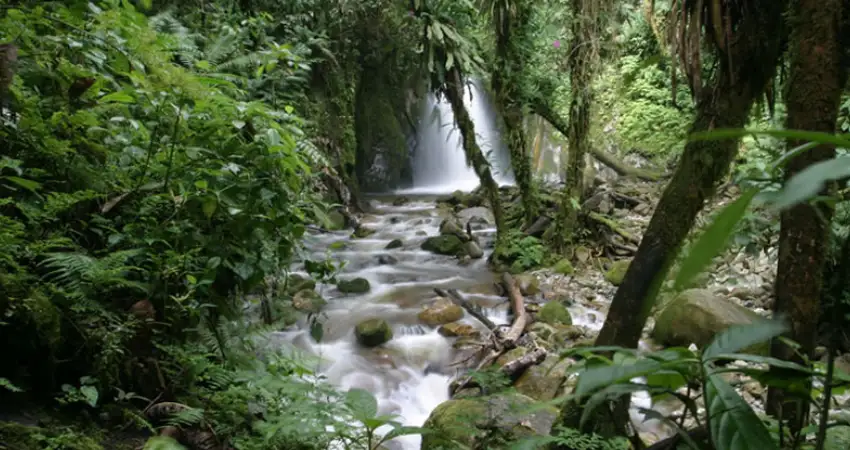
Now you know that visiting the Mandor Waterfalls is not an alternative for everyone who visits Machu Picchu, in fact it is a privilege that very few can enjoy. Auri Peru can be a reality that your visit to Inca city is complemented with a short stay inside this natural paradise, contact us now to start designing your next adventure.
“Twenty years from now you will be more disappointed by what you didn’t do than by what you did do.”




